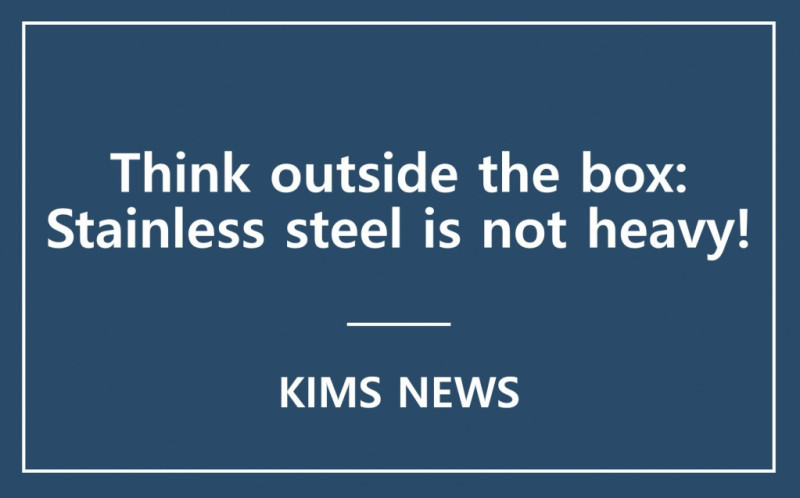R&D | A research team at KIMS was selected as the Top 100 Scientific Reports in 2020
Page info
Date21-09-08 11:24 Hit610Link
Contents
Think outside the box: Stainless steel is not heavy! |
The research of a Korean research team led by Dr. Chang-Hoon Lee at the Korea Institute of Materials Science, a government
funded research institute under the Ministry of Science and ICT, was selected as the Top 100 Scientific Reports 2020 in the
materials science. This research developed the world's first technology to produce lightweight stainless steel, which is about
20% lighter than the existing stainless steel.
Traditionally lightweight steel was produced by adding aluminum, a light alloying element, to iron. But as aluminum increases
the brittleness which makes it easily broken, it is difficult to add more than 10% of aluminum to iron. The researchers
succeeded in lowering the brittleness of steel even with the addition of 12% aluminum, by optimizing the added amount of
alloying elements such as carbon, manganese, and chromium. In particular, the lightweight steel can withstand corrosion
because of a fine and dense oxide layer by using chromium.
Stainless steel, developed in the 1910s, has been closely influencing our lifestyle. It is used in a number of industries, such as
automobiles, shipbuilding, architecture, medical care, and home appliances, which makes it difficult to find a field in which
stainless steel is not used. This was possible because it solved the shortcomings of steel, which is weak to corrosion. However,
another obstacle of steel, weight reduction, has not been solved. According to many reports on future environmental
predictions, reduction of greenhouse gases such as carbon dioxide, improvement of energy efficiency, and achievement of
carbon neutrality will determine the future of human beings. As there are rapid changes in the industry, steel, which has
excellent mechanical properties, weldability, and economic feasibility, faces serious competition with lightweight metals and
composite materials. For suggesting the future direction of steel technology, this research outcome is very meaningful.
Jung-Hwan Lee, the president of KIMS, said, “The reason why steel materials were selected in the Top 100 Scientific Reports
among emerging materials such as batteries and biotechnology is that they presented a new scientific and social
paradigm for steel.” “We will continue to work hard so that KIMS can mark a milestone in the development of steel technology,” he
added.
Scientific Reports is a sister journal of Nature, one of the world's top three scientific journals. Every year, it selects the Top
100 Scientific Reports for the papers with the most downloads in each research field. More than 1,000 papers in materials
science are published in Scientific Reports annually.

